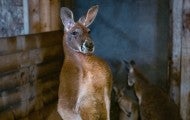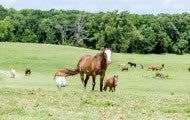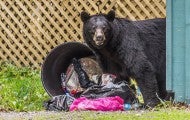Today, the New York state legislature passed a bill that ends inhumane wildlife killing contests, in which participants compete to kill the most, the heaviest and the smallest animals for cash and prizes. In 2018 and 2020, the Humane Society of the United States released undercover investigations...
WARNING: This page contains graphic content. When rescuers slowly creaked the rusty door open, the dilapidated building appeared to be empty. Windowless and dark, the sheet-metal structure held no noise, only air thick with spiderwebs, dust and the burning smell of ammonia. Then a head with small...
A shocking undercover investigation recently conducted in Iowa by the Humane Society of the United States and Humane Society International found what can only be described as a massive garbage bin of the trophy hunting industry. A four-day event where thousands of animals – including at least 557...
Waconia, MINNESOTA—On Aug. 10, the Humane Society of the United States attended the Carver County Fair Tiger Encounter exhibit to witness firsthand how the animals were being treated in a show that claims to raise awareness about the plight of tigers in the wild and their rapid rate to extinction...
One of the Humane Stewardship Alliance’s newest members is the 264-acre Taft Gardens & Nature Preserve in Ojai, California. A bit northwest of LA and Lake Casitas, Ojai is nestled in the foothills of the beautiful Topatopa Mountains. This hidden gem includes both exotic gardens and extensive natural...
In a quiet corner of Black Beauty Ranch, on a stone plinth beneath a maple tree, there’s an oval etching of a man and a burro. The man is Cleveland Amory, author and founder of the Fund for Animals, and the burro is Friendly, one of the first animals to call the sanctuary home. The two met in 1980...
It started in 2002: The bears around Durango, Colorado, came down from the hills to feast on the city’s garbage. Normally, natural food—nuts and berries and acorns—keeps them in the woods, but a series of droughts and late freezes in 2002, 2007, 2012 and 2017 left them hungry. Despite their fear of...


